How To Grow And Care For Heart Fern (Hemionitis Arifolia)?
Written by Ivy
Jan 05 2022
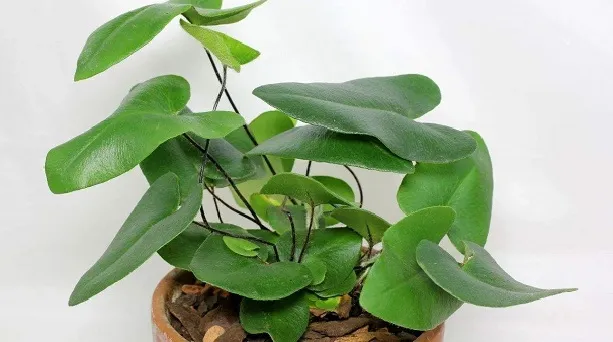
Heart fern, also known as Hemionitis Arifolia, is a series of pteridophytes with heart-shaped leaves. It is native to Asia, China (Taiwan, Hainan, Yunnan), India, Sri Lanka, Malaysia, the Philippines, Vietnam, Laos, Cambodia and other places. The type specimens are collected from India. Heart fern is wild below 975m above sea level, under dense forests, wetlands, valleys, stone cracks or shrubs. Heart Fern was first named in 1859.
The morphological characteristics of heart fern are unique among fern ornamental plants, and its leaves are evergreen all year round, complete and lovely. Heart fern plants have strong adaptability, rapid growth and simple maintenance. It is suitable for potting, hanging basin or pond and stream embellishment. It can also be used for combined potting. Heart fern is a good plant for home viewing, office and meeting room greening, wall and windowsill embellishment.
Heart fern is a tropical medium and small terrestrial fern with a plant height of 10-25cm. Rhizome short, erect, covered with light brown narrowly lanceolate scales. The fertile petiole of heart fern is much longer than the sterile petiole, chestnut or purple black, slightly shiny, covered with open reddish brown subulate scales and reddish brown nodular long hair. The leaf blade of heart fern is heart-shaped, ovate or halberd shaped, the apex is blunt or round, the base is deep heart-shaped, and is inclined to the petiole. The leaf veins are reticulate, the mesh is small and dense, long hexagonal, obliquely upward, there are no hidden veins, and the two sides are not very obvious. Heart fern leaves are herbaceous after drying, light brown green above, glabrous, brown below.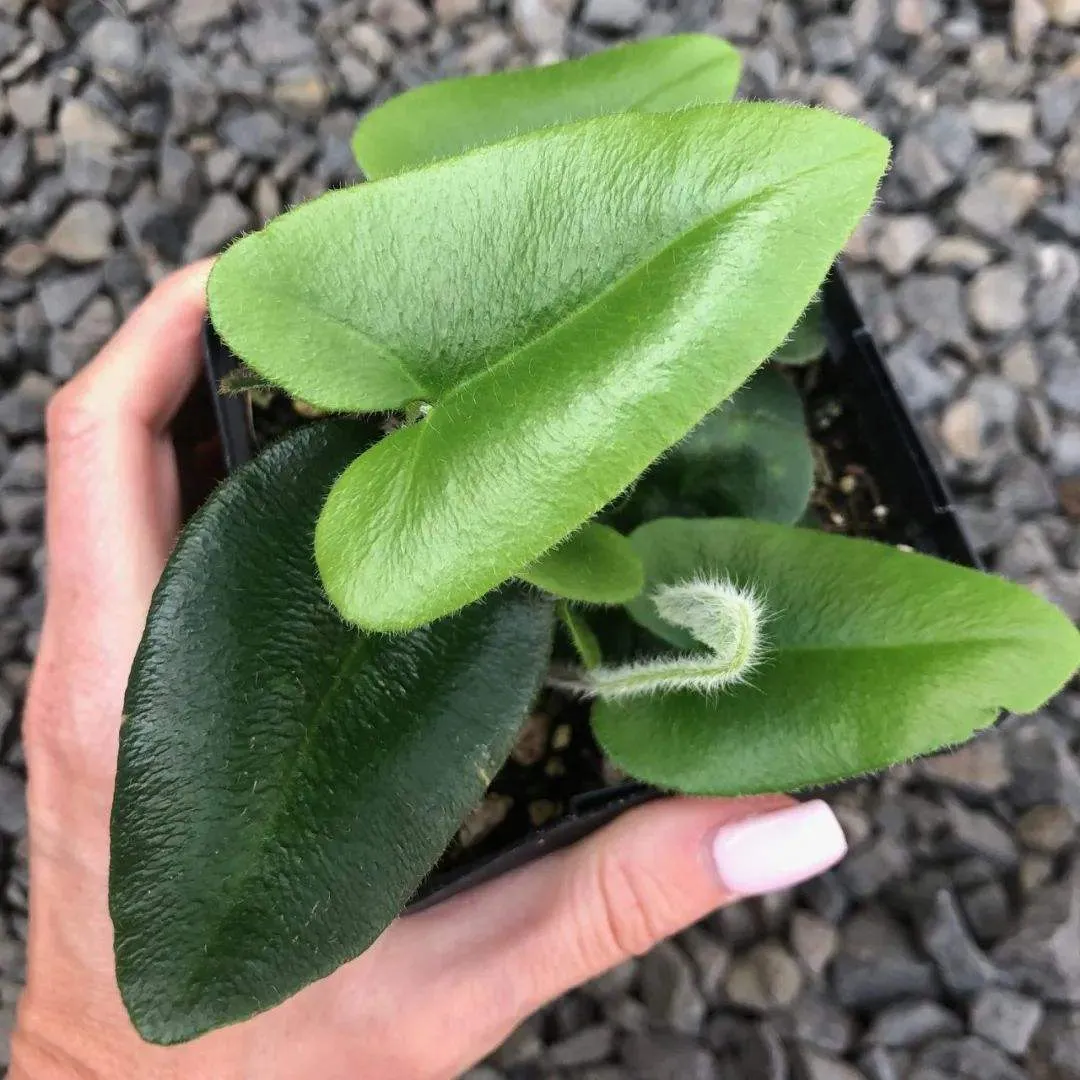
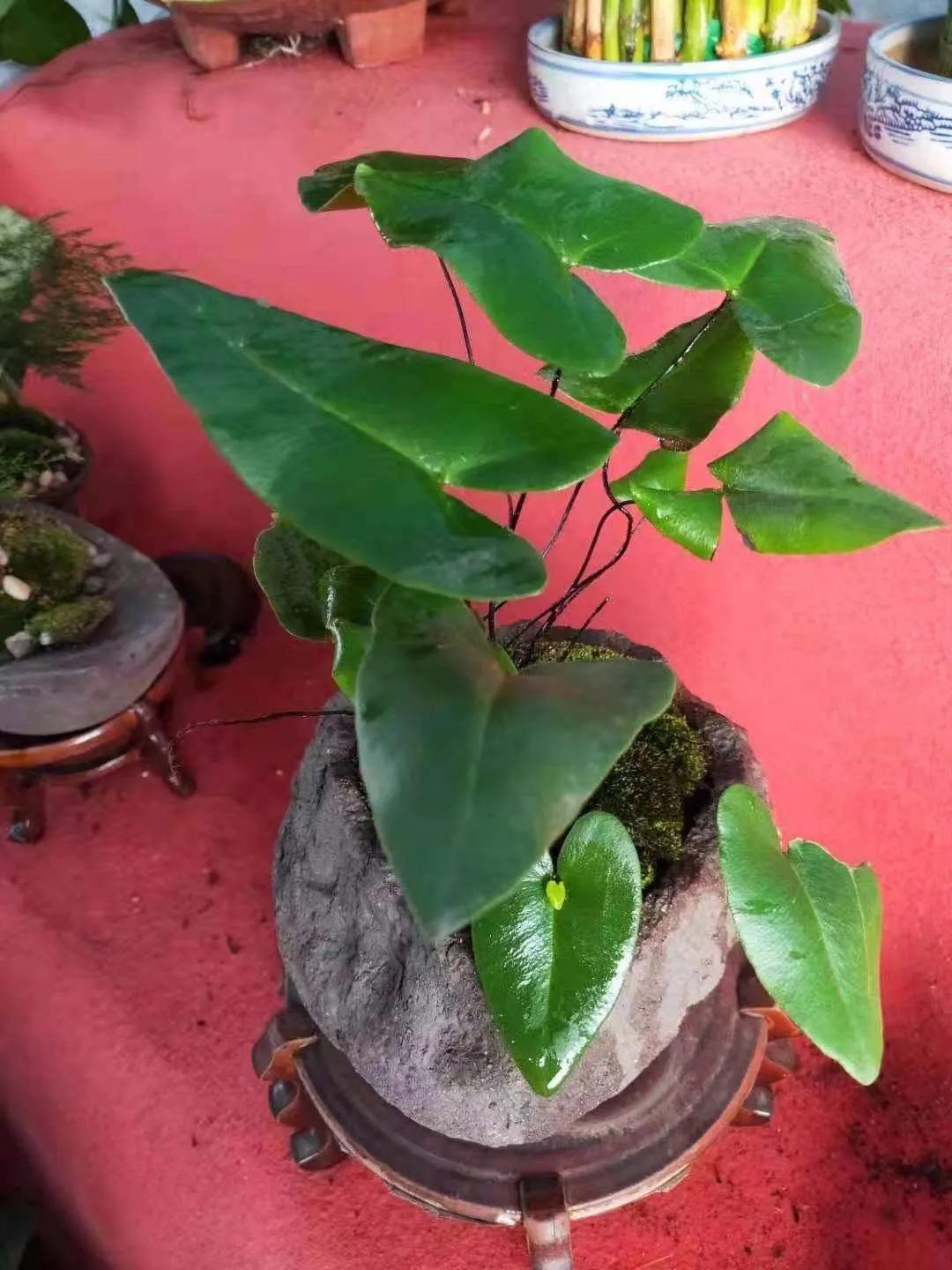
The pot soil configuration for cultivating potted heart fern is also very simple. Common rotten leaf soil, vegetable garden soil and bark (pine scale) can be used. Mix in a ratio of 5:2:3. Rotten leaf soil can be replaced by peat soil or coconut bran, and bark can be replaced by river sand or coarse coconut bran. As long as we ensure that the soil of heart fern has good drainage and good air permeability, it is very beneficial to its growth.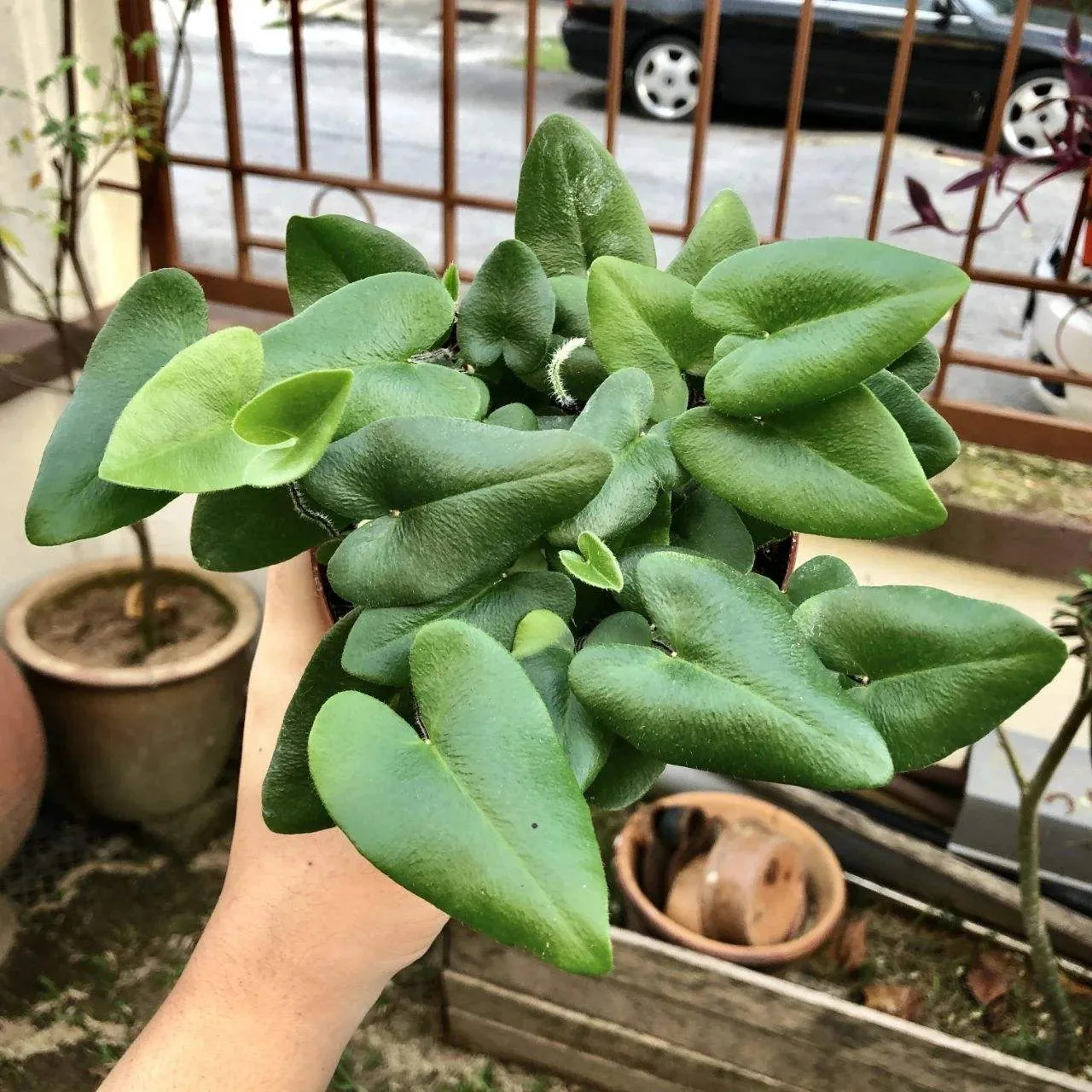
When planting heart fern, do not use too large flowerpots. Compact flowerpots are easier to manage. Water can be lost quickly, and then watered in time to make the basin soil dry and wet quickly, which can make it grow rapidly. Do not let the roots of heart fern soak in water for a long time, and do not let the basin soil dry for a long time.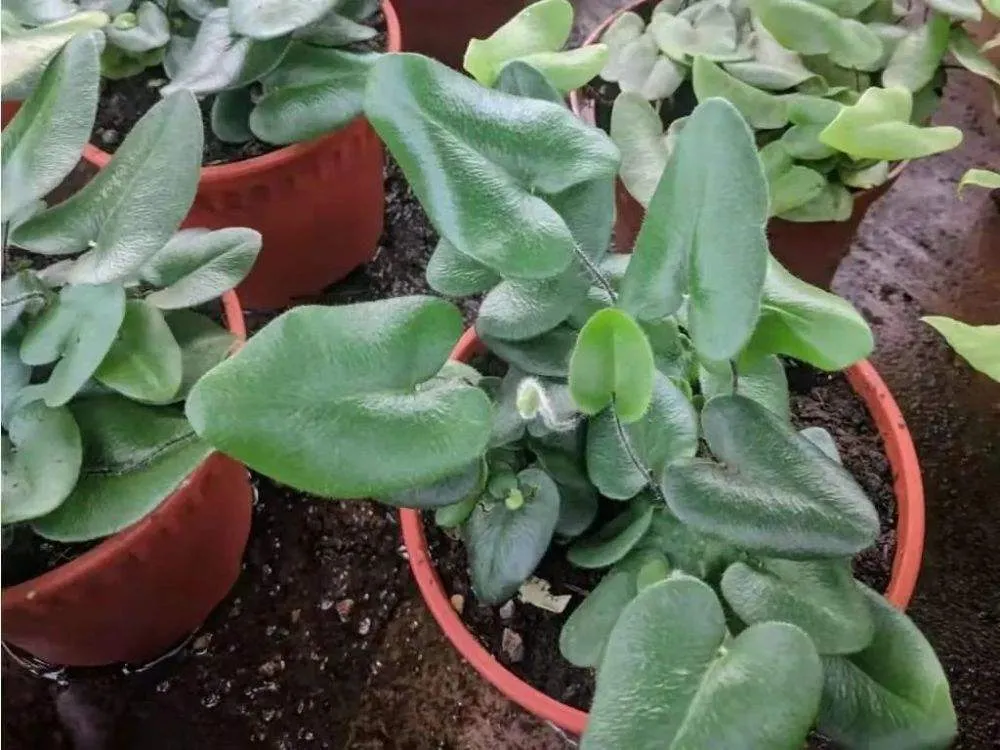
Sporangia groups inserted along reticular veins, brown, uncovered. Spore propagation has high survival rate and short cycle. It is the most convenient propagation mode of Alisma orientalis. Usually, spores will appear at the junction of leaves and petioles under the condition of proper regulation of water and fertilizer supply. Spores can grow into seedlings after about 4 weeks. We can cut heart fern seedlings together with leaves with branch scissors. Each seedling can be potted independently, and the cultivation substrate can cover the base of the seedling.
The morphological characteristics of heart fern are unique among fern ornamental plants, and its leaves are evergreen all year round, complete and lovely. Heart fern plants have strong adaptability, rapid growth and simple maintenance. It is suitable for potting, hanging basin or pond and stream embellishment. It can also be used for combined potting. Heart fern is a good plant for home viewing, office and meeting room greening, wall and windowsill embellishment.
Heart fern is a tropical medium and small terrestrial fern with a plant height of 10-25cm. Rhizome short, erect, covered with light brown narrowly lanceolate scales. The fertile petiole of heart fern is much longer than the sterile petiole, chestnut or purple black, slightly shiny, covered with open reddish brown subulate scales and reddish brown nodular long hair. The leaf blade of heart fern is heart-shaped, ovate or halberd shaped, the apex is blunt or round, the base is deep heart-shaped, and is inclined to the petiole. The leaf veins are reticulate, the mesh is small and dense, long hexagonal, obliquely upward, there are no hidden veins, and the two sides are not very obvious. Heart fern leaves are herbaceous after drying, light brown green above, glabrous, brown below.

Heart Fern Quick InfoHeart Fern Care in DetailHeart Fern WateringHeart Fern SoilHeart Fern FertilizerHeart Fern RepottingHeart Fern TemperatureHeart Fern LightHeart Fern HumidityHeart Fern PruningHeart Fern Pest & Disease ControlHeart Fern Propagation
Heart Fern Quick Info
| Botanical/Scientific Name | Hemionitis Arifolia |
| Common Name | Heart Fern |
| When to Grow/Bloom/Harvest | Plant in Spring |
| Uses | Treatment of Diabetes mellitus |
| Origin | South East Asia |
| Light Care | Bright, indirect light to shaded areas |
| Soil Care | Moist soil |
| Temperature Care | Above 60°F 15°C |
| Humidity Care | A humidity level of 60 to 80% |
| Watering | Water when the layer of the soil appears dry |
| Pruning Care | Trimming leggy stems |
| Fertilizer Care | Water-soluble fertilizer |
| Propagation | Division |
| Toxic | Not toxic |
Heart Fern Care in Detail
Heart Fern Watering
During the growth period of heart fern, we should water it and spray water on its leaves every day to maintain humidity. When plants were withered because of lack of water, they should immediately immerse the basin in clean water and spray on the ground. Watering heart fern is best done in the morning, especially for varieties with thin leaf division. When watering at night, water droplets stay between leaves and evaporate slowly, which is easy to cause leaf rot. Avoid muggy and need more ventilation in summer. Pay attention to water supply during ventilation to make the air in the environment fresh and not dry.
Heart Fern Soil
The soil of heart fern should be rich in organic matter, loose and permeable, and slightly acidic (pH 5.5 to 6.0) is the most suitable. The matrix is generally prepared with peat soil, rotten leaf soil, perlite or coarse sand according to 2:1:1, or decomposed compost, coarse sand or perlite according to 1:1. The root system is weak and difficult to apply heavy fertilizer.The pot soil configuration for cultivating potted heart fern is also very simple. Common rotten leaf soil, vegetable garden soil and bark (pine scale) can be used. Mix in a ratio of 5:2:3. Rotten leaf soil can be replaced by peat soil or coconut bran, and bark can be replaced by river sand or coarse coconut bran. As long as we ensure that the soil of heart fern has good drainage and good air permeability, it is very beneficial to its growth.
Heart Fern Fertilizer
When we plant heart fern, base fertilizer can be added to the matrix. During the growth period, liquid fertilizer can be applied directly with the concentration of no more than 1%, up to once a week. Sufficient nitrogen will make the plants grow vigorously. Insufficient nitrogen will make the old leaves of heart fern gray green and gradually yellow, and the leaves are small; Excessive nitrogen is easy to make heart fern grow and reduce resistance. Phosphorus is very important for the root growth of ferns. Lack of phosphorus will make the plants short, the leaves dark green and the root system underdeveloped. We can spray potassium dihydrogen phosphate and calcium superphosphate on the leaf surface of heart fern to supplement phosphorus. Potassium can enhance photosynthesis and promote the formation of chlorophyll. If it is lacking, the old leaves will show spots and gradually wither and yellow. Calcium deficiency will inhibit the growth of heart fern, distort the leaves and gradually die from the leaf tip. Lack of Mg will make the old leaves of heart fern gradually change color, but the veins remain dark green. Lack of Fe will make the new fern leaves turn gray green and gradually wither yellow, and the leaf veins become old and black. Mn deficiency will cause necrotic spots on the veins of heart fern leaves. Lack of B resulted in the death of terminal bud. Lack of Cu makes the leaves chlorotic, the leaves gradually turn yellow, and finally fall off and die. When applying fertilizer to heart fern, we should apply it thinly and frequently, and spray it on the leaf or chase it out of the root as needed.
Heart Fern Repotting
Potted ferns need to be repotted every 2 to 3 years. Heart fern can change pots from February to August without damaging roots. When we refill the basin for heart fern, we can put 2cm thick broken bricks at the bottom of the basin to facilitate drainage. Then lay 2 cm thick charcoal to absorb the residual salt and toxic gas in the soil. Then add a layer of bone meal (rich in phosphate fertilizer) to facilitate root growth. We put heart fern into the basin and then fill the prepared substrate, so as to ensure the growth of plants and achieve good cultivation effect.When planting heart fern, do not use too large flowerpots. Compact flowerpots are easier to manage. Water can be lost quickly, and then watered in time to make the basin soil dry and wet quickly, which can make it grow rapidly. Do not let the roots of heart fern soak in water for a long time, and do not let the basin soil dry for a long time.
Heart Fern Temperature
Heart fern has strong adaptability to the environment and is easy to grow. However, it should be noted that heart fern is very afraid of cold. The minimum maintenance temperature should be kept above 7 ~ 10 degrees. If the temperature is lower than 15 degrees, heart fern will stop growing. The best growth temperature of heart fern is between 18 and 30 degrees. In such an environment, its leaves will grow rapidly and many new leaves will sprout. The new leaves of heart fern grow from the massive stem at the bottom.Heart Fern Light
If we want to take good care of heart fern, we should also give enough scattered light and good ventilation to avoid strong light. If the light is too strong, the leaves will be sunburned. Heart fern potted plants can be kept under the light for several hours every day, which can also make it grow well.Heart Fern Humidity
Many friends' heart fern leaves will curl, yellow, wrinkle, or wither and scorch edges. In fact, the air humidity can not meet the requirements. It especially likes the environment with high humidity. It is best to maintain the relative humidity above 65%, and the best growth humidity of heart fern is 80% ~ 90%. In fact, it is very simple to solve the problem of humidity maintenance. We can keep these heart ferns in a small basin, then put them on a larger water cup, or put them on a high foot container, add clean water at the bottom of the container (container without drain hole), and the water level should not exceed the bottom of the potted heart fern, so as to continuously increase the humidity, and the basin soil will not be wet all the time.Heart Fern Pruning
The root system of heart fern is particularly strong. In the later stage, if it is to be transplanted in pots, it is necessary to properly trim the root system. During maintenance, the common rotten leaf soil, coarse sand and bark can be mixed in the ratio of 1:1:1.
Heart Fern Pest & Disease Control
Heart fern is rarely infected with diseases and pests. If the rhizome is soaked in water for a long time, the root will rot. If the environment is too humid and the ventilation is poor, anthrax and brown spot will occasionally be infected (the leaves have black or brown patches and stripes), as long as we cut off the heart fern diseased leaves in time and spray fungicides, such as methyltobutzine and chlorothalonil, spray them every 5 ~ 7 days and spray them continuously for 2 ~ 3 times, the disease can be removed.Heart Fern Propagation
In the later stage, if we want to propagate heart fern, it is particularly simple. On some old leaves, some buds will grow. These spores will grow into new seedlings, and the seedlings will germinate new roots. Spores with some roots contact the soil or cut down, and they can be cultivated into new plants again.Sporangia groups inserted along reticular veins, brown, uncovered. Spore propagation has high survival rate and short cycle. It is the most convenient propagation mode of Alisma orientalis. Usually, spores will appear at the junction of leaves and petioles under the condition of proper regulation of water and fertilizer supply. Spores can grow into seedlings after about 4 weeks. We can cut heart fern seedlings together with leaves with branch scissors. Each seedling can be potted independently, and the cultivation substrate can cover the base of the seedling.
Latest Updated
- Benefits of Bugleweed - 7 Science-backed Health Benefits
- Bugleweed Dangers & Side Effects - Is It Poisonous?
- How to Plant Evergreen Trees - What You Should Know
- When to Plant Evergreens - Grow Guide for Evergreen Trees
- 12 Wonderful Evergreen Shrubs for Your Garden
- 12 Popular Evergreen Plants with Pictures for Beginners
- When And How To Prune A Lilac Bush Like a Pro
- How to Grow & Care for Lilac Vine (Hardenbergia Violacea)
- Japanese Lilac Tree (Syringa Reticulata) Care & Propagation Guide
- Shumard Oak Pros and Cons - What to Know
Popular Articles
- Winter maintenance of Antirrhinum Majus
- How to Grow Terminalia Mantaly Tree
- How to Grow and Care for Crossostephium Chinense
- How to grow Antirrhinum Majus in spring
- Peristeria Elata (Dove Orchid) Profile: Info & Care Guide
- Underwatered Snake Plant (Sansevieria Trifasciata) - Signs And How To Fix
- How to Care for Brazilian Jasmine Plant (Mandevilla Sanderi)
- How to Grow & Care for Graptopetalum Purple Delight in Summer
- Rosa Chinensis (China Rose): Plant Growing & Care Tips
- How to Care for Baby Sun Rose (Aptenia Cordifolia)